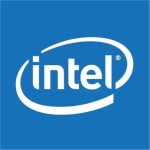What is our primary use case?
We primarily use the product for normal server purposes, for the running of Windows 2016 or 2019. We also use it for custom network monitoring applications, so we may monitor some of our infrastructure. I would not consider the product to be very specific, as the application is dependent on the HP server. We can post it on any server.
What is most valuable?
While there is nothing specific that I like about HP server products, they are stable, as much so as Dell EMC.
What needs improvement?
HPE ProLiant DL Servers lack scalability.
For how long have I used the solution?
We have been using HPE and Dell EMC service products for two years.
What do I think about the stability of the solution?
We have had no issues with the stability of the product.
What do I think about the scalability of the solution?
HPE ProLiant DL Servers are not scalable. There will be no dependency between the other servers, should we need to scale. Unlike VxRail, it will be completely isolated, the solutions being capable of being scaled up to 64 nodes. It is a pay-as-you-grow solution, which is the one that we are moving on from now.
How are customer service and technical support?
We have not had occasion to make direct use of HPE technical support, although we we are in regular contact with the contractor who's providing the software running on the HPE. I do not recall any issue involving the hardware.
How was the initial setup?
While the product was delivered by a single contractor, the installation time was that of any other typical server. This only consisted of configuring the ILO, followed by putting on the operating system. That is all. Up to a certain operating level, the configuration of the product would not be a matter of days.
As the business services we provide are of a confidential nature, both for government and military purposes, we deploy strictly on-premises.
What about the implementation team?
The HPE and Dell EMC service products we are using were delivered by the vendor as part of one specific project and it is not up to us to advise which hardware will be provided. Yet, we always take advantage of any internal projects that we have.
What's my experience with pricing, setup cost, and licensing?
We did not need to pay for a license for the use of HPE DL Servers, just for normal hardcore support.
Which other solutions did I evaluate?
In addition to HPE server products, we also evaluated Dell EMC and found the two to be equally stable, although the former does not have a strong presence in Qatar. This said, we evaluated Dell EMC VxRail and Cisco HyperFlex for their virtualization player or hyper-converged player capabilities, but did not consider HP for these features.
Due to Dell EMC's strong presence in Qatar, I would recommend use of this product over that of HPE. This does not owe itself to any technical issues, only that Dell EMC has a stronger presence. Of course, the level of support is an important feature for the end-user.
What other advice do I have?
The kind of servers or HPE products we are using with those of ProLiant DL are DL390, 380, gen 10 and HPDL. We are utilizing gen 10 as our latest version of DL servers.
We utilize a total of six HPE Servers, strictly as a monitoring tool. The NOC membership comprises only 10 people.
As I mentioned, HPE ProLiant DL Servers came as part of a project. We will continue to use it for as long as we continue to renew the contract for the solution that is provided by the contractor.
Which deployment model are you using for this solution?
On-premises
Disclosure: My company does not have a business relationship with this vendor other than being a customer.












